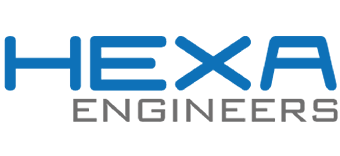
We’ve found that our clients frequently mix up the terms Manufacturing Execution System (MES) and Manufacturing Operations Management (MOM). On the surface, the confusion is understandable, but when you dig a little deeper, you’ll find the two terms aren’t quite interchangeable. In this post, we’ll provide a clearer understanding of MES and MOM, while exploring how they tie in to your larger automation platform.
Understanding MOM
Let’s start by clarifying what we mean when we’re talking about MOM, which is the broader of the two terms. MOM has been around since the 1980s, when it was first used to talk about technology models for manufacturing processes. Fundamentally, MOM entails four primary manufacturing activities:
- Maintenance
- Production
- Quality
- Inventory
In other words, MOM is a pretty broad term that incorporates just about every aspect of manufacturing. That being said, each of these broader activities is composed of many smaller, more localized activities. Thus, when we’re talking about MOM, we’re talking about automating manufacturing processes on a macro level. Most frequently, however, automating MOM processes involves streamlining the relationship between these four primary manufacturing activities, while refining the broader processes within each.
MOM is a pretty broad term that incorporates just about every aspect of manufacturing. That being said, each of these broader activities is composed of many smaller, more localized activities. Thus, when we’re talking about MOM, we’re talking about automating manufacturing processes on a macro level.
Clarifying MES
Unfortunately, many vendors refer to MES software when what they’re really talking about is MOM. This confusion makes it difficult to nail down a precise, universal definition. While the term MES has also been around since the late 1980s, it developed out of a need to express more specific manufacturing application functionalities for production execution and tracking. Thus, MES should be used to describe a particular facet of the manufacturing production process. In certain situations, MES and MOM may be used interchangeably, since you can’t have one without the other; however, MOM tends to take a macro approach to the manufacturing process, while MES tends to focus on the production process at a micro level.
When we’re talking about MES, then, we’re referring to the ways we can automate and refine manufacturing production execution and tracking processes. While other vendors may seem to use the terminology interchangeably, we’re aware of the nuances, and we prefer to use these terms to describe two separate aspects of manufacturing automation. At the end of the day, it just makes it easier to talk about process control systems and production management, so you have a clearer understanding of how automation systems can streamline your operations.
Your Automation Experts
Whether you’re seeking further clarity on the relationship between MOM systems and an MES solution, or you just want to explore the possibilities for automating a process at your facility, contact the experts at HEXA today. We’ve already helped hundreds of companies streamline their operations with customized automation solutions, and we’re ready to help you next.
About
For over 20 years, HEXA Ingenieros has helped companies around the world realize their performance goals with unique, custom-tailored automated solutions. In the wake of our expansion to St. Louis, Missouri, in 2017, we’re proud to announce that we’ve only grown from strength to strength.
